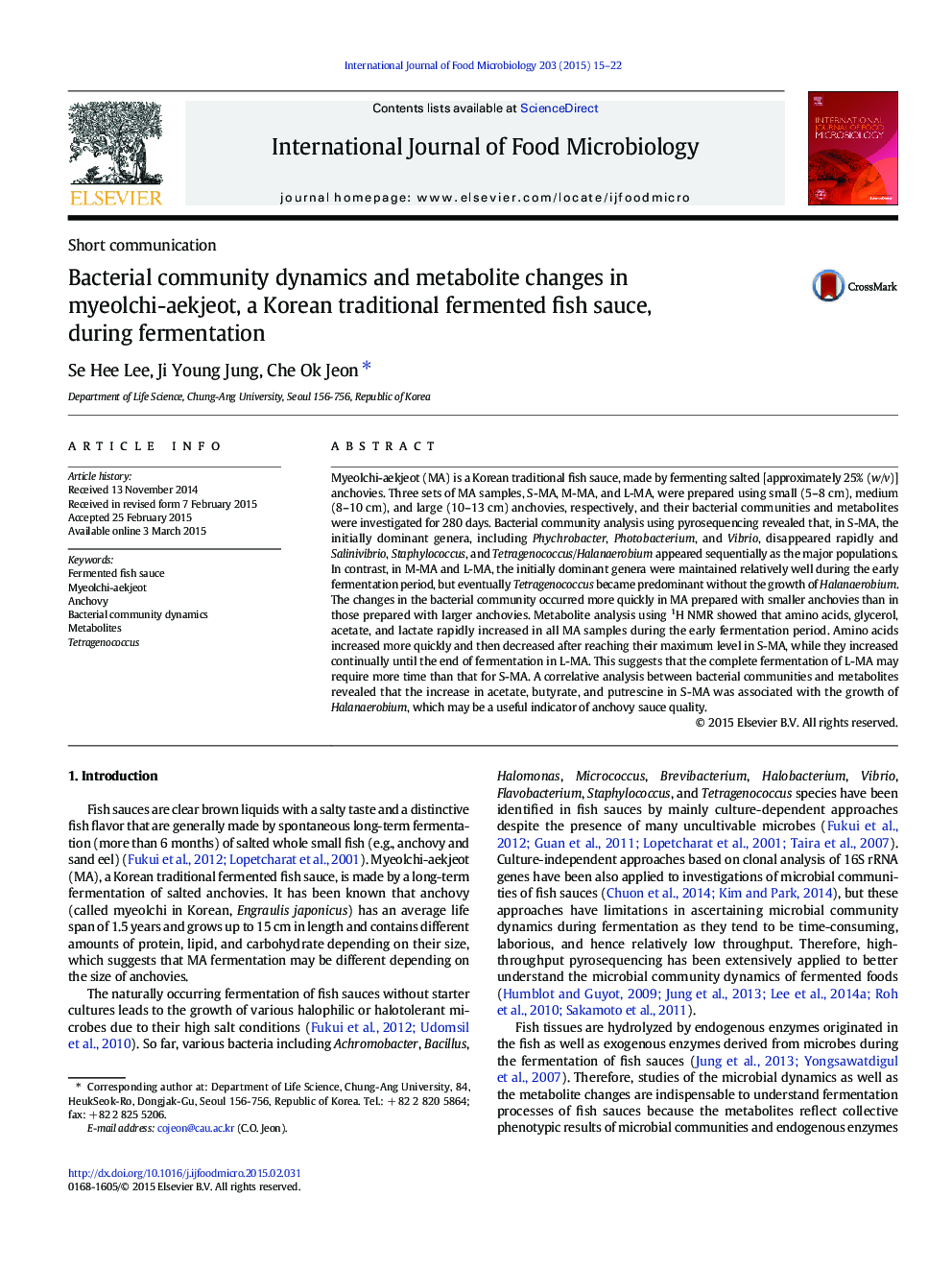| Article ID | Journal | Published Year | Pages | File Type |
|---|---|---|---|---|
| 4366623 | International Journal of Food Microbiology | 2015 | 8 Pages |
•Bacterial community and metabolite were analyzed in myeolchi-aekjeot fermentation.•Myeolchi-aekjeot fermentation was different depending on anchovy sizes.•Tetragenococcus was the predominant genus during the end of fermentation.•Halanaerobium might be an indicator of myeolchi-aekjeot quality.
Myeolchi-aekjeot (MA) is a Korean traditional fish sauce, made by fermenting salted [approximately 25% (w/v)] anchovies. Three sets of MA samples, S-MA, M-MA, and L-MA, were prepared using small (5–8 cm), medium (8–10 cm), and large (10–13 cm) anchovies, respectively, and their bacterial communities and metabolites were investigated for 280 days. Bacterial community analysis using pyrosequencing revealed that, in S-MA, the initially dominant genera, including Phychrobacter, Photobacterium, and Vibrio, disappeared rapidly and Salinivibrio, Staphylococcus, and Tetragenococcus/Halanaerobium appeared sequentially as the major populations. In contrast, in M-MA and L-MA, the initially dominant genera were maintained relatively well during the early fermentation period, but eventually Tetragenococcus became predominant without the growth of Halanaerobium. The changes in the bacterial community occurred more quickly in MA prepared with smaller anchovies than in those prepared with larger anchovies. Metabolite analysis using 1H NMR showed that amino acids, glycerol, acetate, and lactate rapidly increased in all MA samples during the early fermentation period. Amino acids increased more quickly and then decreased after reaching their maximum level in S-MA, while they increased continually until the end of fermentation in L-MA. This suggests that the complete fermentation of L-MA may require more time than that for S-MA. A correlative analysis between bacterial communities and metabolites revealed that the increase in acetate, butyrate, and putrescine in S-MA was associated with the growth of Halanaerobium, which may be a useful indicator of anchovy sauce quality.
